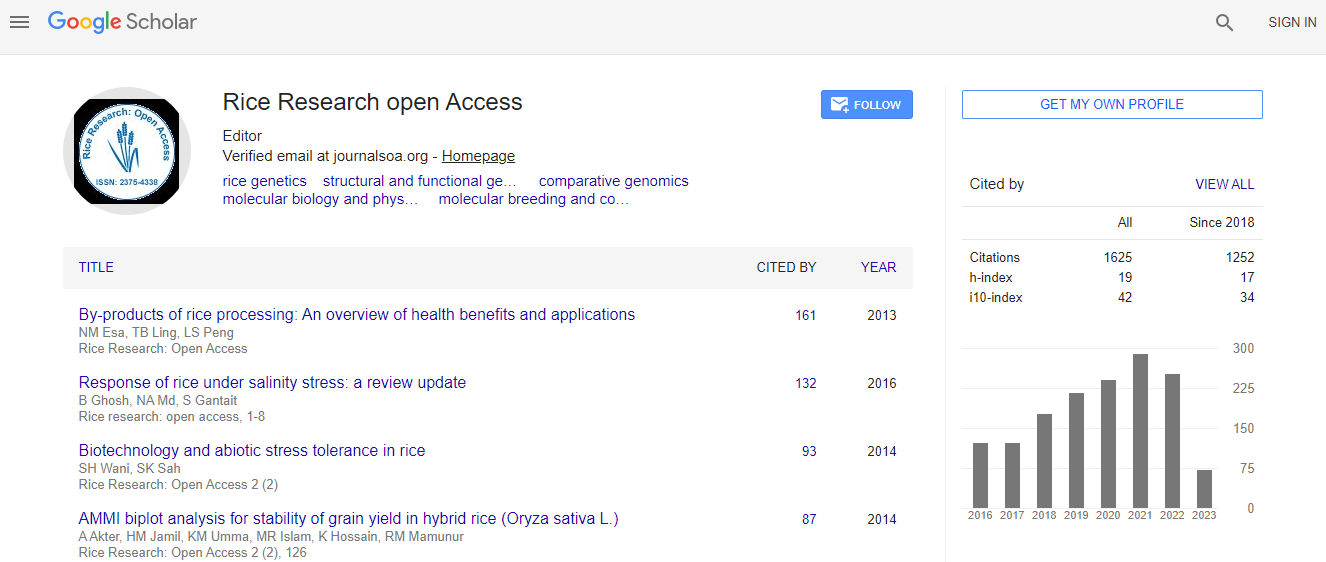Research Article
Differences, Correlation of Compositions, Taste and Texture Characteristics of Rice from Heilongjiang China
Fenglian Chen1, Chunhua Yang1, Linlin Liu1, Tianyi Liu1, Yang Wang1, Lichao Wang1, Yanguo Shi1* and Osvaldo H Campanella21State Key Laboratory of Food Science and Engineering, Department of Food Science & Engineering, Harbin University of Commerce, Harbin 150076, China
2Department of Agricultural and Biological Engineering, Purdue University, 745 Agricultural Mall Drive, West Lafayette, IN 47907, USA
- *Corresponding Author:
- Yanguo Shi
State Key Laboratory of Food Science and Engineering
Department of Food Science & Engineering
Harbin University of Commerce, Harbin 150076, China
Tel: +86 451 84603294
Fax: +86 451 84844281
E-mail: yanguosh@163.com
Received date: 7 December, 2016; Accepted date: 27 January 2017; Published date: 3 February 2017
Citation: Chen F, Yang C, Liu L, Liu T, Wang Y, et al. (2017) Differences, Correlation of Compositions, Taste and Texture Characteristics of Rice from Heilongjiang China. J Rice Res 5:178. doi: 10.4172/2375-4338.1000178
Copyright: © 2017 Chen F, et al. This is an open-access article distributed under the terms of the Creative Commons Attribution License, which permits unrestricted use, distribution, and reproduction in any medium, provided the original author and source are credited.
Abstract
In this research, differences in composition, texture characteristics and sensory features of twenty kinds of rice from Heilongjiang China were studied. Experimental results showed significant differences in content of fat, amylose and protein however those differences were not extended to perceived taste evaluation by sensory evaluation. Hardness was measured from 363.6 gs to 1120.3 gs by TPA from 6103.7 g to 11641.1 g adhesiveness, springiness was from 0.4 to 0.6, gumminess was from 2538.9 to 6373.9 and resilience was from 0.2 to 0.3. According to correlate analysis between the chemical composition and taste of rice, we derived that more fat led to more springiness, more protein led to lower viscosity but better hardness and springiness, higher amylose content resulted lower viscosity and taste but higher springiness as well as higher carbohydrate content resulted higher viscosity but lower hardness and springiness. After correlate analysis between chemical composition and the texture characteristic of rice, it was concluded that moisture content was negatively correlated with hardness, gumminess and adhesion, while significantly correlated with resilience; the content of protein was negatively correlated with adhesion but positively correlated with hardness, cohesiveness, gumminess and significantly positively correlated with resilience; the content of ash and adhesion were negatively correlated. The adhesiveness of texture characteristic and the viscosity of taste showed significant positive correlation, and the cohesiveness and resilience of texture characteristic were positively correlated with the softness of taste index.

 Spanish
Spanish  Chinese
Chinese  Russian
Russian  German
German  French
French  Japanese
Japanese  Portuguese
Portuguese  Hindi
Hindi 
